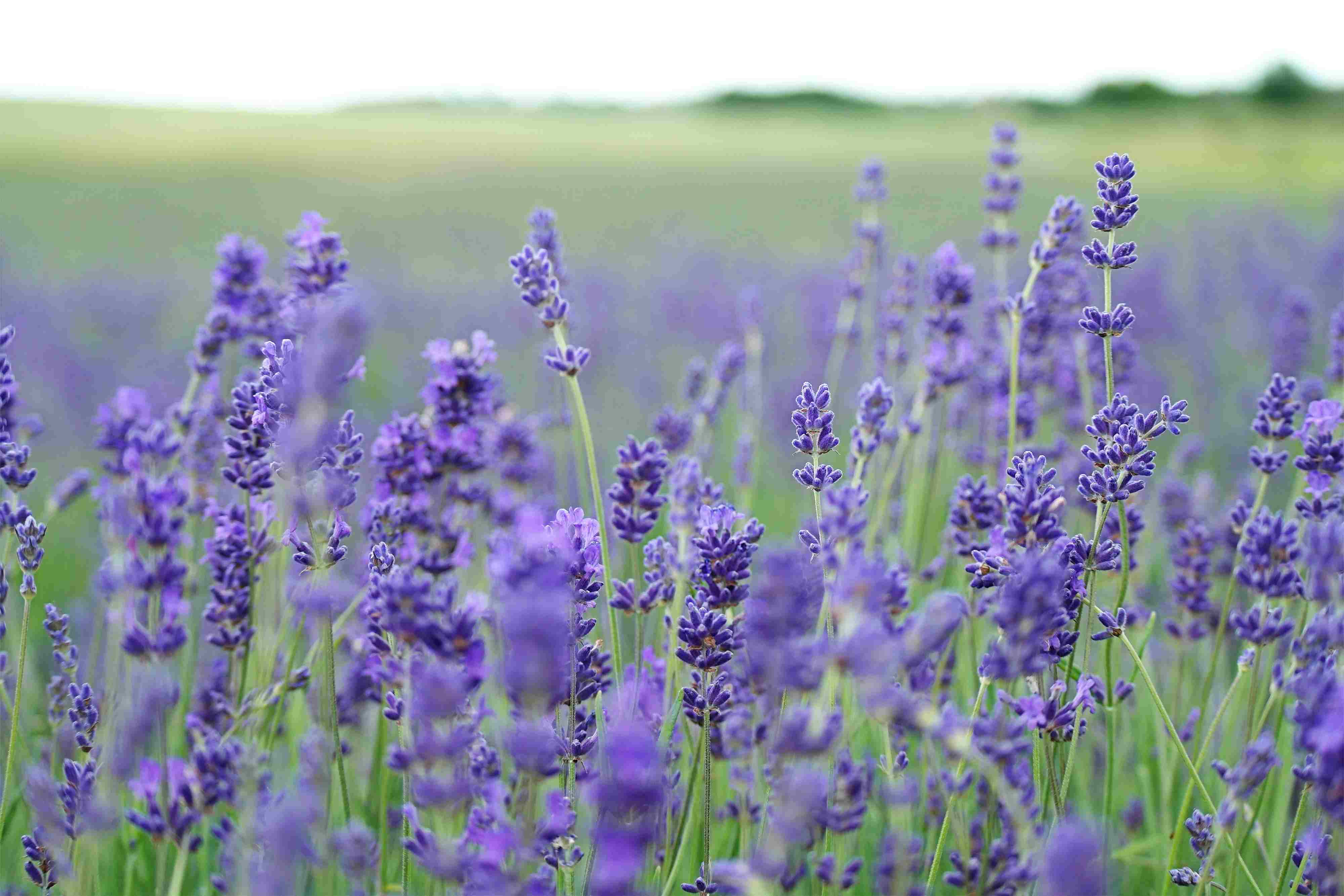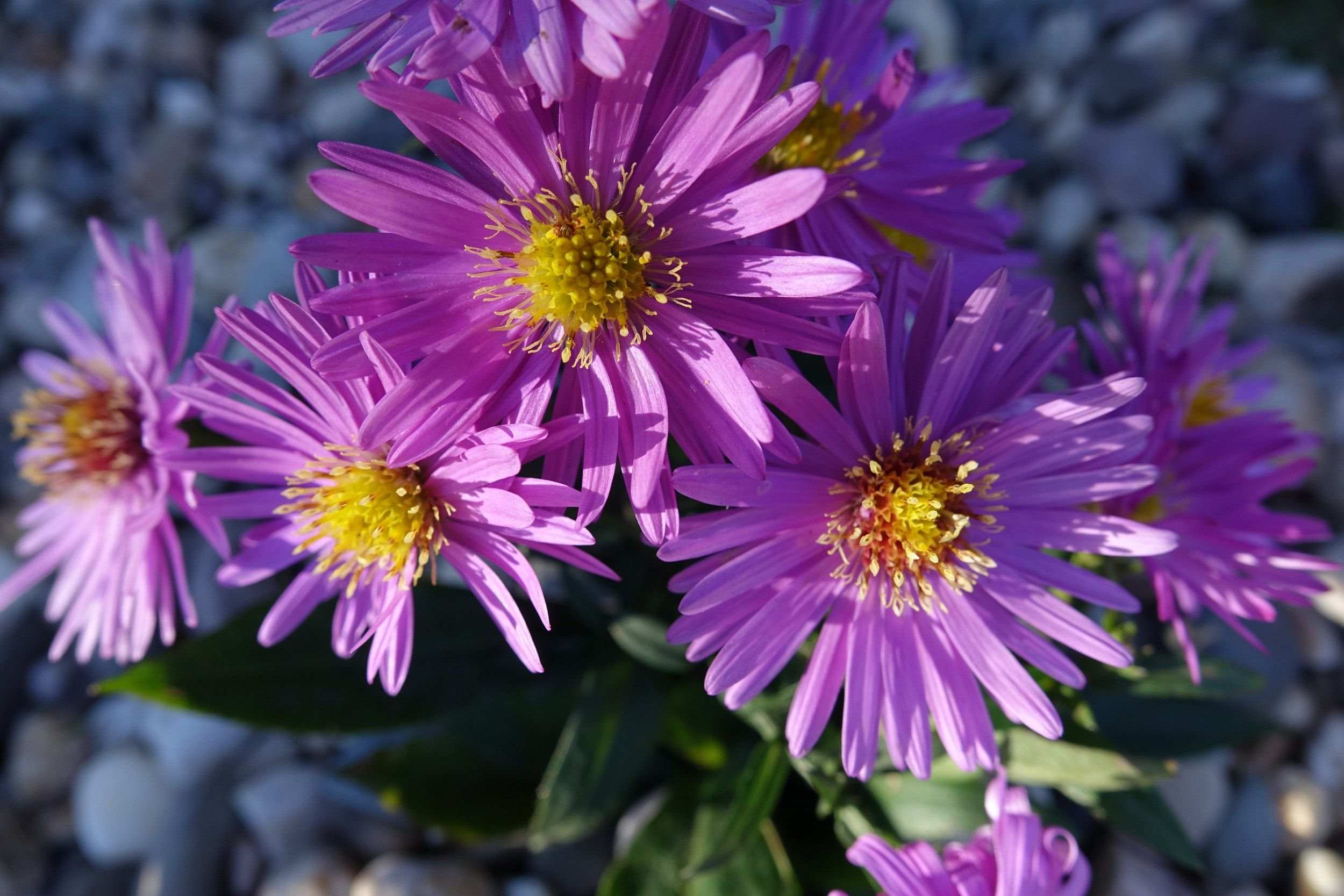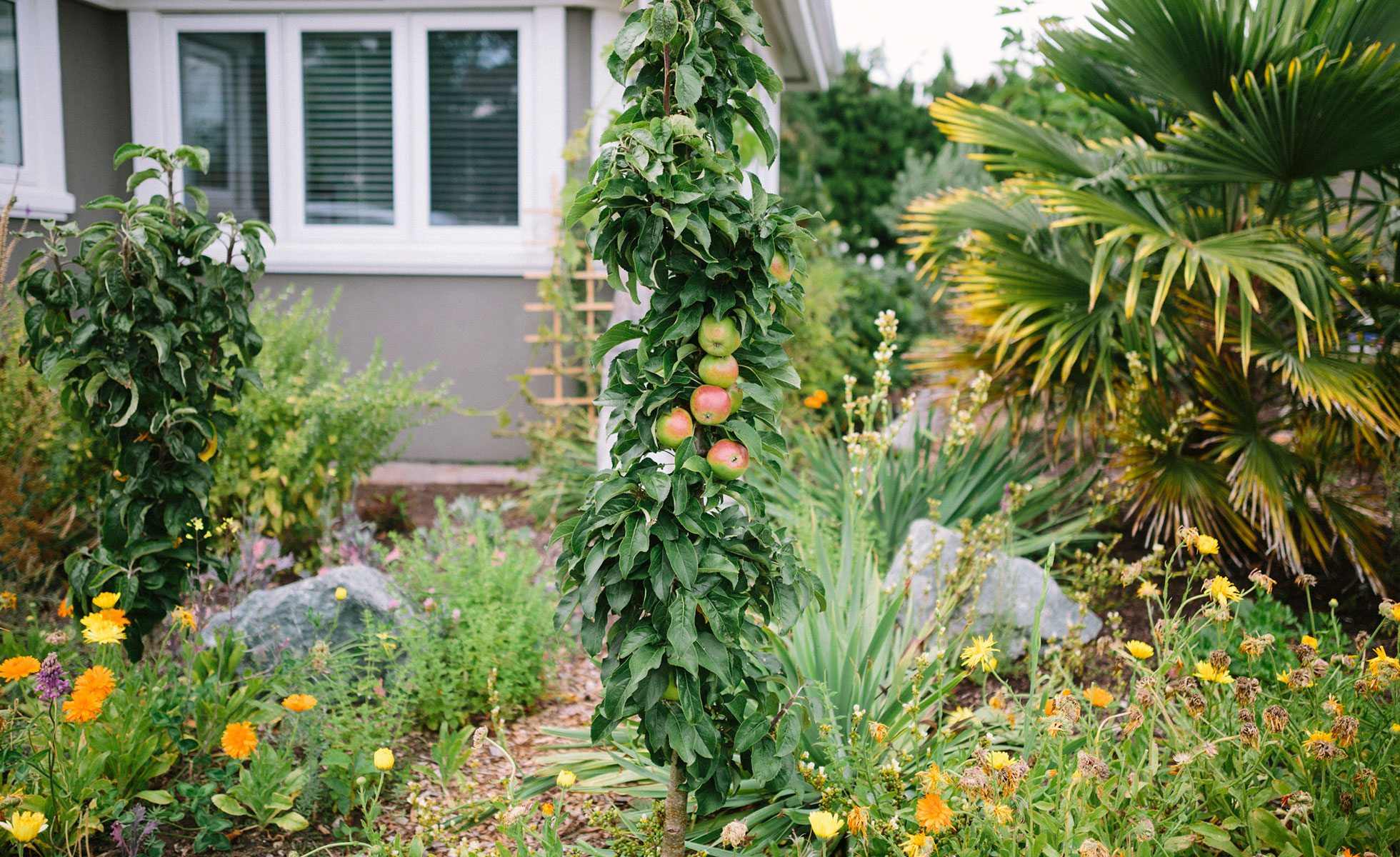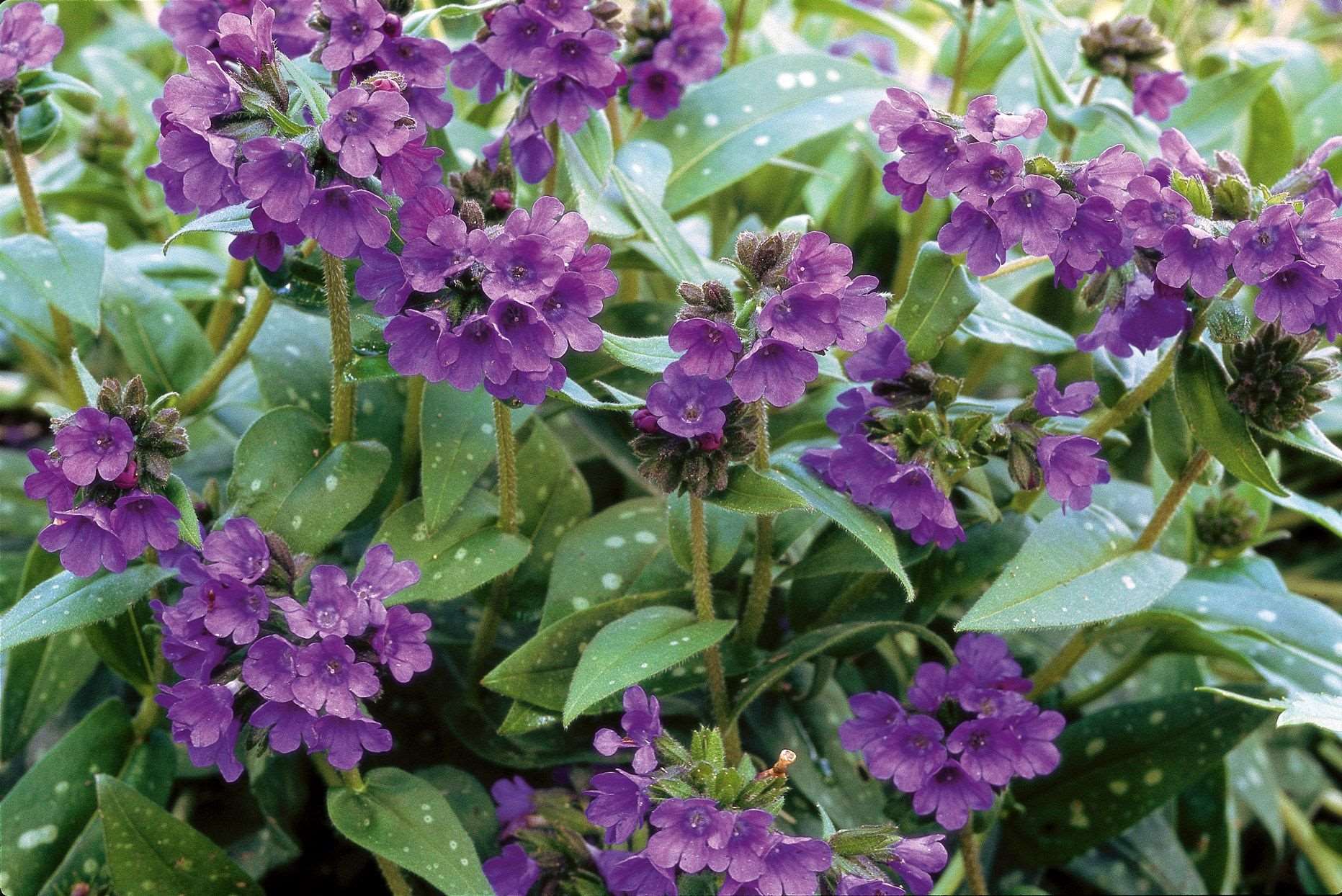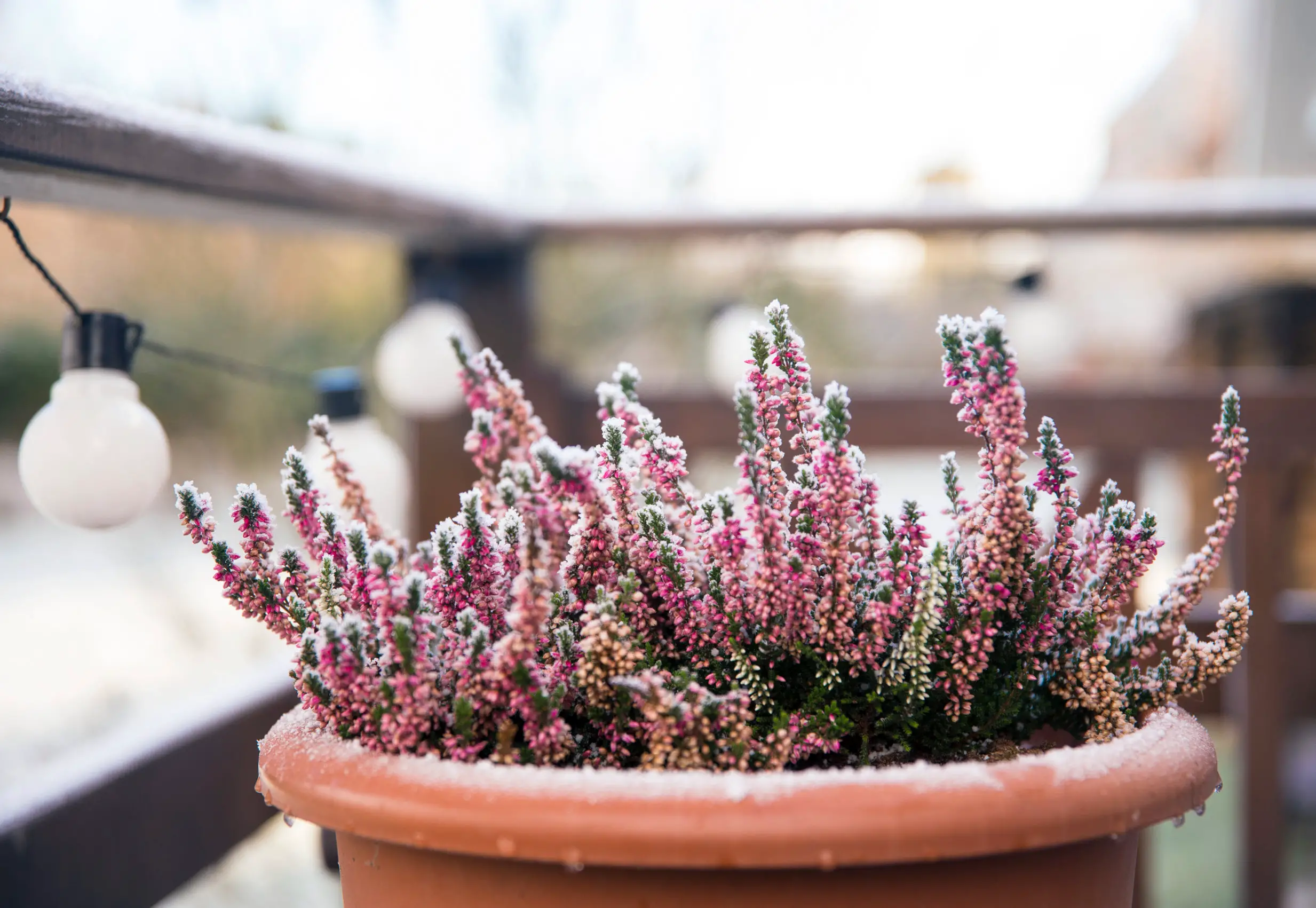Home>Gardening Techniques>Plant Care>What Are The Longest Flowering Perennials
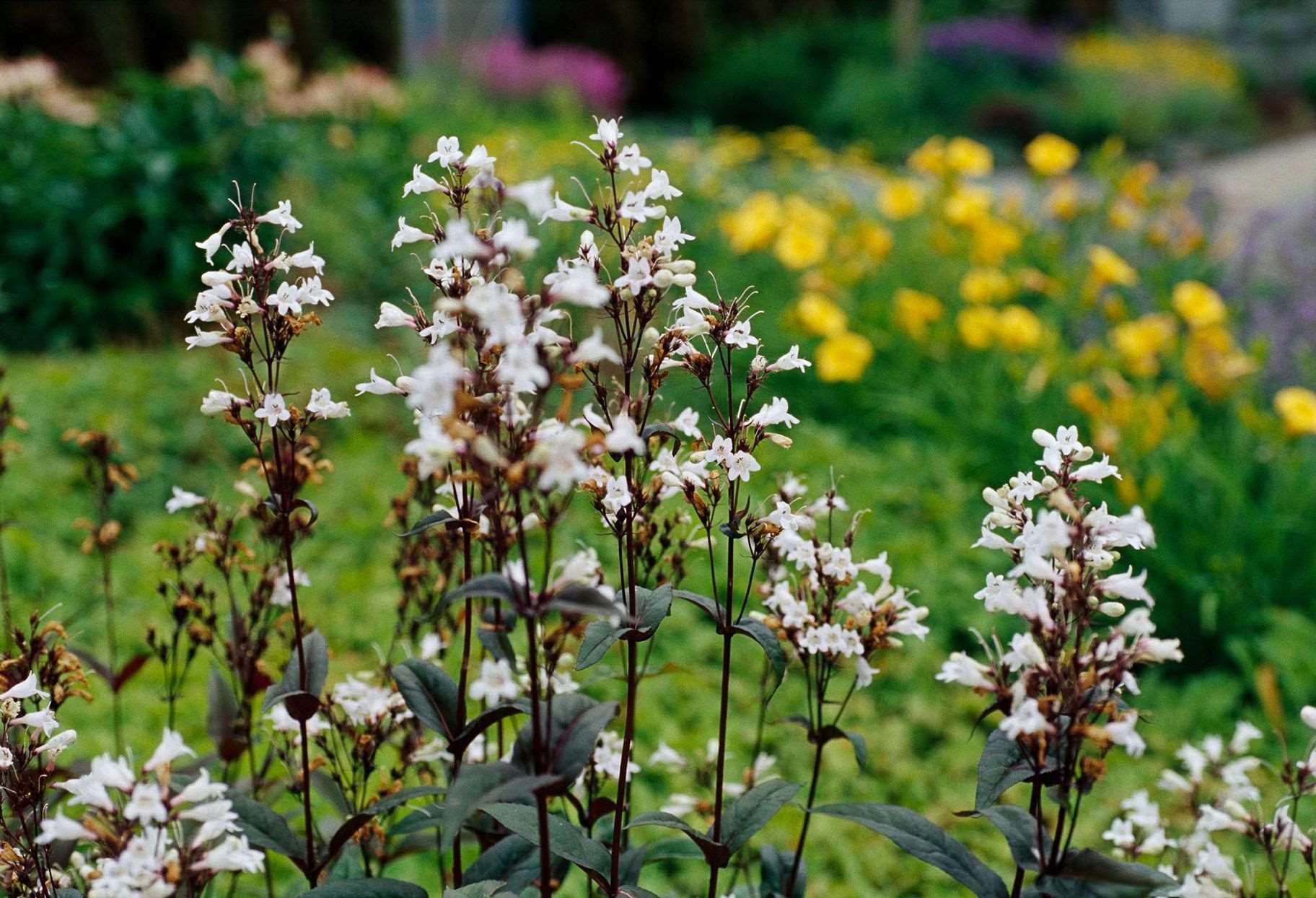

Plant Care
What Are The Longest Flowering Perennials
Modified: February 9, 2024
Discover the best long-lasting flowering perennials for your garden. Learn about their plant care requirements and how to keep them blooming all season.
(Many of the links in this article redirect to a specific reviewed product. Your purchase of these products through affiliate links helps to generate commission for Chicagolandgardening.com, at no extra cost. Learn more)
Table of Contents
Introduction
Welcome to the world of plant care, where cultivating and nurturing plants can bring joy and beauty to your surroundings. One essential aspect of plant care is understanding the flowering periods of different plants, particularly perennials. Perennials are plants that live for more than two years, and they play a significant role in creating long-lasting and vibrant displays in gardens and landscapes.
Perennials are loved for their ability to bloom year after year, adding color and charm to any garden. However, not all perennials have the same flowering durations. Some perennials have shorter flowering periods, while others have significantly longer ones. Understanding the longest flowering perennials can help you plan your garden and ensure continuous blooms throughout the growing season.
The appeal of long-flowering perennials lies in their ability to provide beautiful blooms for an extended period. These plants are a fantastic investment for any gardener who wants to enjoy a vibrant garden throughout the year. In addition to their aesthetic appeal, long-flowering perennials also contribute to the overall health and well-being of their environment.
The duration of the flowering period in perennials can vary based on several factors, including species, environmental conditions, and horticultural practices. By understanding these factors, you can optimize your plant care techniques and create the ideal growing conditions for your long-flowering perennials.
In this article, we will explore the top 10 longest flowering perennials that will ensure your garden remains a visual delight for an extended period. From stunning flowers to a variety of colors, these perennials will bring life and vibrancy to your outdoor space. So, let’s dive in and discover the beauty and endurance of these remarkable plants.
Definition of Perennials
Before we explore the world of long-flowering perennials, it’s important to have a clear understanding of what exactly constitutes a perennial plant. Perennials are plants that live for more than two years, unlike annuals that complete their life cycle within a year and biennials that live for two years before flowering and producing seeds.
One of the distinguishing characteristics of perennials is their ability to regrow and bloom each year from their root system. This allows them to establish a more permanent presence in a garden or landscape. While their foliage may die back during certain seasons, their roots remain intact and dormant until the conditions are favorable for new growth.
Perennials showcase a wide range of shapes, sizes, and colors, making them a versatile choice for any garden style. They can be herbaceous, with soft and non-woody stems, or woody, with hard and durable stems. Some popular perennial varieties include peonies, daylilies, daisies, and roses.
One of the advantages of growing perennials is their longevity. With proper care and maintenance, they can thrive and continue to bloom for many years. This provides a sense of stability and consistency in a garden, and the opportunity for gardeners to establish a perennial bed or border.
Perennials are known for their adaptability to a wide range of climates and conditions. They can be found in various habitats, from sunny meadows to shady woodlands. This versatility makes perennials suitable for different regions and allows gardeners to choose plants that are well-suited to their specific growing environment.
In addition to their long lifespan, perennials also offer a cost-effective solution for gardeners. While the initial investment may be slightly higher than annuals, the long-term benefits of perennials far outweigh the cost. With proper care, these plants can provide continuous blooms and beauty, eliminating the need for frequent replacements.
Now that we have a clear understanding of what perennials are and their advantages, let’s explore the significance of long flowering periods in these remarkable plants.
Importance of Long Flowering Periods
The flowering period of a plant is a crucial factor when selecting perennials for your garden. The length of time a plant produces blooms directly impacts the overall appeal and enjoyment of your outdoor space. Here are several reasons why long flowering periods are important:
- Continuous Beauty: Long-flowering perennials ensure your garden remains visually captivating throughout the season. With extended blooms, you can enjoy an ever-changing display of colors and textures, creating a dynamic and vibrant landscape.
- Attracting Pollinators: Flowers are essential for attracting pollinators such as bees and butterflies. Long-flowering perennials provide a consistent food source for these important creatures, promoting biodiversity and supporting the overall health of your garden ecosystem.
- Extended Gardening Season: By selecting perennials with long flowering periods, you can extend your gardening season well into late summer or even fall. This allows you to continue enjoying your garden and reaping the rewards of your hard work for a longer duration.
- Cost Efficiency: Long-flowering perennials offer excellent value for money. With continuous blooms, you don’t need to invest in frequent replacements or buy new plants to maintain a colorful garden. This makes them a cost-effective choice in the long run.
- Low Maintenance: Perennials with extended flowering periods often require minimal maintenance. Once established, they can thrive with basic care, reducing the time and effort needed for frequent upkeep or replanting.
- Versatile Design Possibilities: Long-flowering perennials provide more options for designing your garden. You can create stunning color combinations and experiment with different plant combinations, knowing that the blooms will last for an extended period.
Whether you are a seasoned gardener or a beginner, the importance of long flowering periods in perennials cannot be overstated. Not only do these plants enhance the beauty of your garden, but they also contribute to the overall health of your outdoor space by attracting pollinators and creating a sustainable ecosystem.
Now that we understand why long flowering periods are important, let’s explore the factors that can affect the duration of blooms in perennials.
Factors Affecting Flowering Duration in Perennials
Several factors can influence the duration of flowering in perennials. Understanding these factors can help you maximize the blooming period and ensure your plants thrive. Here are some key factors to consider:
- Genetics: The genetic makeup of a plant plays a crucial role in its flowering duration. Some perennials are naturally inclined to have shorter blooming periods, while others have genetic traits that enable them to bloom for much longer. Choosing perennial varieties known for long-lasting blooms can significantly impact the duration of flowers in your garden.
- Environmental Conditions: Environmental factors such as temperature, light, and humidity can greatly influence the flowering duration of perennials. Each plant has its own specific environmental requirements for optimal growth and blooming. Providing the right conditions, such as adequate sunlight, appropriate soil moisture, and the right temperature range, can help prolong the flowering period of your perennials.
- Soil Fertility: The fertility of the soil has a direct impact on a plant’s ability to produce and sustain flowers. Perennials require a nutrient-rich soil to support continuous blooming. Regularly nourishing your plants with organic matter, compost, and balanced fertilizers can improve soil fertility and contribute to an extended flowering period.
- Pruning and Deadheading: Proper pruning and deadheading practices can help extend the blooming period of perennials. Removing spent flowers and pruning back leggy or overgrown stems encourages new growth and the production of more blooms. This process redirects the plant’s energy towards flower production, resulting in a longer flowering duration.
- Pest and Disease Management: Pests and diseases can significantly impact the health and vigor of perennials, reducing their ability to produce flowers. Implementing effective pest and disease management strategies, such as regular inspection, proper sanitation, and timely treatment, can help protect the plants and ensure uninterrupted blooming.
- Proper Watering: Providing the right amount of water is crucial for the overall health and flowering duration of perennials. Overwatering or underwatering can stress the plant and affect its ability to produce flowers. It’s important to establish a watering routine that meets the specific needs of each perennial and the prevailing weather conditions.
By considering these factors and implementing appropriate practices, you can optimize the flowering duration of your perennials and enjoy prolonged blooms throughout the growing season. It’s essential to provide the ideal growing conditions and care for your plants to ensure their optimal performance.
Now that we understand the factors that influence flowering duration in perennials, let’s explore the top 10 long-flowering perennials that you can consider for your garden.
Top 10 Longest Flowering Perennials
When it comes to selecting perennials with the longest flowering periods, you have an array of beautiful options to choose from. These plants offer a prolonged display of vibrant colors and enchanting blooms. Here are the top 10 long-flowering perennials that will transform your garden into a breathtaking oasis:
- Perennial A: This stunning perennial is known for its extraordinary flowering duration, with blooms that last from early spring through late fall. Its delicate petals and sweet fragrance make it a favorite among gardeners.
- Perennial B: With its striking and vibrant flowers, this perennial graces the garden with continuous blooms from the beginning of summer until the first frost. Its sturdy stalks and diverse color palette make it a must-have for any garden.
- Perennial C: This perennial boasts an impressive flowering period that begins in early summer and extends well into autumn. Its graceful blooms and attractive foliage create a mesmerizing display throughout the season.
- Perennial D: Known for its long-lasting blooms, this perennial bursts into color in spring and continues to dazzle with its vibrant flowers until the end of summer. Its resilience and adaptability make it a popular choice for many garden enthusiasts.
- Perennial E: This delightful perennial offers an extended blooming period that starts in late spring and persists until the early days of winter. Its dainty flowers and graceful growth habit make it a charming addition to any garden.
- Perennial F: With its profusion of blooms, this perennial showcases its longevity by flowering from early summer to the first frost. Its vibrant colors and compact form create a stunning visual impact in any garden setting.
- Perennial G: This remarkable perennial blooms from spring until late autumn, providing an exceptional display of flowers throughout the growing season. Its distinct appearance and ability to tolerate various growing conditions make it a versatile choice for any garden.
- Perennial H: With its extended flowering period that begins in midsummer and continues into early winter, this perennial brings beauty and charm to the garden when many other plants have finished blooming. Its unique flowers add a touch of elegance to any landscape.
- Perennial I: This perennial showcases its endurance by producing blooms from early spring until late summer. Its vibrant colors and attractive foliage make it a standout in any garden design.
- Perennial J: With its prolonged blooming season that starts in early spring and extends to the first frost, this perennial brings continuous beauty to the garden. Its intricate flowers and appealing fragrance make it an irresistible choice.
These top 10 long-flowering perennials offer a remarkable display of colors and endurance, ensuring your garden remains a visual masterpiece throughout the growing season. Selecting from these options will add elegance and vibrancy to your outdoor space, bringing joy and awe to both you and your visitors.
Now that we have explored the top 10 long-flowering perennials, let’s reflect on the significance of these remarkable plants in creating stunning and enduring gardens.
Perennial A
Perennial A is a remarkable plant that is well-known for its exceptionally long flowering duration. It is a showstopper in any garden, captivating gardeners with its stunning blooms that last from early spring through late fall.
One of the standout features of Perennial A is its delicate and intricate petals that come in a variety of vibrant colors. From soft pastels to bold and vibrant hues, these flowers add a touch of elegance and whimsy to any garden design.
Not only does Perennial A offer a prolonged blooming period, but it also emits a sweet and pleasant fragrance that perfumes the air, attracting bees, butterflies, and other pollinators. This makes it not only visually appealing but also beneficial for biodiversity and the overall health of your garden ecosystem.
This perennial is known for its resilience and adaptability, thriving in a wide range of growing conditions. From full sun to partial shade, Perennial A can withstand different levels of sunlight and still produce its breathtaking blooms. It is also tolerant of various soil types, making it a versatile choice for gardens in different regions.
When it comes to care, Perennial A is relatively low maintenance. Regular watering, appropriate fertilization, and occasional deadheading will keep this plant looking its best and ensure continued flowering throughout its blooming season.
Not only does Perennial A provide beauty and fragrance, but it also adds height and structure to the garden. Its upright stems and lush foliage create an eye-catching presence among other plants, making it an excellent choice for borders or as a focal point in the landscape.
Whether you’re a seasoned gardener or a beginner, Perennial A is a must-have for any garden enthusiast. Its long flowering duration, attractive colors, and delightful fragrance make it a top choice for creating a captivating and enduring garden display.
Now that we’ve explored Perennial A, let’s move on to discover the next long-flowering perennial on our list.
Perennial B
Perennial B is a magnificent plant that boasts an impressive and extended flowering period, making it a sought-after addition to any garden. With its striking and vibrant flowers, Perennial B brings continuous beauty and charm from the beginning of summer until the first frost.
One of the standout features of Perennial B is its sturdy stalks and diverse color palette. The flowers come in an array of captivating colors, ranging from rich and deep hues to soft and pastel tones. This variety allows for endless possibilities when it comes to creating visually striking garden displays.
Not only does Perennial B offer a long flowering duration, but it is also a hardy and resilient plant. It can withstand various weather conditions, including periods of drought, making it an excellent choice for gardens in regions with unpredictable climates.
This perennial’s ability to attract pollinators is another noteworthy aspect. Its vibrant blooms act as beacons, enticing bees, butterflies, and hummingbirds. By planting Perennial B in your garden, you not only add beauty but also contribute to the vital role of pollinators in ecosystem health.
Perennial B is relatively easy to care for, adding to its appeal for gardeners of all levels of expertise. Providing well-draining soil and regular watering will help ensure the plant’s continued growth and blooming. Deadheading spent flowers can also encourage new growth and prolong the flowering period.
With its upright growth habit and lush foliage, Perennial B adds height and structure to garden beds and borders. It can be planted as a focal point or used as a backdrop for other flowering plants, creating a visually cohesive and dynamic landscape design.
Whether you’re looking to add a pop of color, attract pollinators, or create a visually striking garden display, Perennial B is a fantastic choice. Its extended flowering duration, sturdy nature, and vibrant flowers make it a standout perennial in any garden.
Now that we’ve discovered the beauty of Perennial B, let’s move on to explore the next long-flowering perennial on our list.
Perennial C
Perennial C is a remarkable plant known for its impressive and prolonged flowering duration. From early summer through autumn, this perennial delights gardeners with its graceful blooms and adds a touch of elegance to any garden.
One of the standout features of Perennial C is its unique and eye-catching flowers. With their distinct shape and captivating colors, they create a mesmerizing display that is sure to capture attention. The blooms can vary from soft pastels to bold and vibrant shades, allowing for endless possibilities when it comes to garden design.
Not only does Perennial C offer a long flowering duration, but it also boasts an attractive foliage that provides interest even when the plant is not in bloom. The foliage can be in a variety of colors and textures, adding depth and contrast to the garden and making Perennial C a versatile choice for different landscape styles.
This perennial is known for its adaptability to different growing conditions, making it suitable for a wide range of garden landscapes. Whether it’s full sun or partial shade, Perennial C can thrive and produce its stunning blooms in various lighting conditions. It is also tolerant of different soil types, making it a versatile choice for different regions.
Caring for Perennial C is relatively straightforward. Providing regular watering, ensuring well-draining soil, and occasional fertilization will help keep the plant healthy and promote continuous blooming. Deadheading spent flowers can also encourage the plant to produce new blooms, extending the flowering duration even further.
With its graceful growth habit and beautiful flowers, Perennial C adds a touch of elegance to garden beds and borders. It can be used as a stunning focal point or planted in groups to create a captivating mass of color and texture.
Whether you’re looking to bring color and beauty to your garden or create an enchanting landscape, Perennial C is an excellent choice. Its extended flowering duration, unique flowers, and versatile foliage make it a standout perennial in any garden setting.
Now that we’ve explored the beauty of Perennial C, let’s move on to discover the next long-flowering perennial on our list.
Perennial D
Perennial D is a remarkable plant that showcases a prolonged flowering duration, delighting gardeners from early spring until the end of summer. With its vibrant and captivating blooms, this perennial adds a burst of color and beauty to any garden.
One of the standout features of Perennial D is its impressive resilience and adaptability. It can withstand various weather conditions, including periods of heat and drought, making it a reliable choice for gardeners in challenging climates.
Perennial D is known for its stunning flowers that come in a wide range of shades, from soft pastels to vibrant and bold colors. The blooms are a true visual treat, attracting attention and adding a touch of elegance to any garden design.
Not only does Perennial D offer an extended blooming period, but it is also a magnet for pollinators. Bees, butterflies, and hummingbirds are drawn to its vibrant flowers, making it a valuable addition to any garden aiming to support pollinator populations.
For those looking for a low-maintenance plant, Perennial D is a great choice. It requires minimal care and attention, thriving in well-draining soil and regular watering. Deadheading spent flowers can help prolong the blooming period and encourage continuous flower production.
Gardeners can maximize the impact of Perennial D by planting it in mass groupings or using it as a border plant. Its tall and sturdy stems, coupled with its attractive foliage, create a striking presence in the garden, adding height and structure to the overall landscape.
Whether you’re seeking a pop of color or a plant that will attract pollinators, Perennial D is an excellent choice. Its extensive flowering duration, resilience, and vibrant blooms make it a standout perennial in any garden setting.
Now that we’ve explored the beauty of Perennial D, let’s move on to discover the next long-flowering perennial on our list.
Perennial E
Perennial E is a delightful plant that offers an extended flowering duration, bringing joy and beauty to any garden from late spring to early winter. With its dainty flowers and graceful growth habit, this perennial is sure to captivate the hearts of garden enthusiasts.
One of the standout features of Perennial E is its ability to bloom for an exceptionally long period. From late spring, when the garden is starting to wake up, to the early days of winter, when many plants have finished blooming, Perennial E continues to dazzle with its charming flowers.
The delicate flowers of Perennial E come in a variety of colors, adding a touch of beauty and softness to the garden. From pastel shades to bold and vibrant hues, each bloom is a delightful addition that harmonizes with other plants and brings a sense of tranquility.
Perennial E is known for its adaptability to different growing conditions. It can tolerate various levels of sunlight, from partial shade to full sun, and it thrives in well-drained soil. This versatility makes it suitable for different garden settings and allows for flexibility in landscape design.
Caring for Perennial E is relatively easy, making it a fantastic choice for both novice and experienced gardeners. Regular watering to maintain soil moisture, occasional fertilization, and removing spent flowers can keep the plant healthy and promote continuous blooming.
With its compact form and attractive foliage, Perennial E is an excellent choice for borders, container gardens, or as a groundcover. Its ability to bloom for an extended period adds a touch of enchantment to any garden design, making it a wonderful addition to outdoor spaces.
Whether you’re looking to extend the blooming season or add delicate beauty to your garden, Perennial E is a fantastic choice. Its prolonged flowering duration, dainty blooms, and adaptability make it a standout perennial in any garden setting.
Now that we’ve explored the beauty of Perennial E, let’s move on to discover the next long-flowering perennial on our list.
Perennial F
Perennial F is a stunning plant that offers a prolonged blooming period, making it a standout choice for any garden. With its profusion of blooms, this perennial graces the garden with continuous beauty from early summer until the first frost.
One of the standout features of Perennial F is its vibrant and captivating flowers. They come in a wide range of colors, from bold and vibrant shades to soft pastels, creating a visually striking display that is sure to capture attention.
Not only does Perennial F offer an extended flowering duration, but it also boasts a compact and neat growth habit, making it an ideal choice for smaller garden spaces or container gardening. Its robust stems and dense foliage create a lush and full appearance, adding depth and texture to the garden.
This perennial is known for its adaptability to different growing conditions. It can thrive in both full sun and partial shade, making it versatile for various garden locations. Additionally, Perennial F is relatively low maintenance and can tolerate a range of soil types, as long as it is well-draining.
Perennial F is a valuable plant for attracting pollinators to the garden. Its abundant and colorful blooms act as magnets for bees, butterflies, and other beneficial insects, contributing to the overall health and biodiversity of your garden.
Caring for Perennial F is relatively straightforward. Providing regular watering, especially during dry periods, and occasional fertilization will help promote continuous blooming. Deadheading spent flowers is also recommended to encourage the plant to produce more blooms.
Whether used in mixed borders, as a focal point, or as a centerpiece in container gardens, Perennial F will make a stunning impact. Its prolonged blooming period and vibrant flowers add a burst of color and vibrancy to any garden design.
If you’re looking for a perennial that offers continuous beauty and a profusion of blooms, look no further than Perennial F. Its extended flowering duration, striking flowers, and adaptability make it a standout choice for any garden enthusiast.
Now that we’ve explored the beauty of Perennial F, let’s move on to discover the next long-flowering perennial on our list.
Perennial G
Perennial G is a remarkable plant that boasts an extended blooming period, delighting gardeners with continuous beauty from spring until late autumn. With its vibrant and diverse flowers, this perennial creates a mesmerizing display in any garden.
One of the standout features of Perennial G is its ability to produce blooms that last for an exceptionally long time. From the early days of spring, when the garden is just awakening, to the cooler days of autumn, Perennial G continues to showcase its stunning flowers.
The flowers of Perennial G exhibit a wide range of colors, from soft pastels to deep and rich shades. This variety adds depth and visual interest to any garden design, allowing for endless possibilities when it comes to creating beautiful and harmonious flower combinations.
Perennial G is known for its adaptability and versatility. It can thrive in a variety of growing conditions, from full sun to partial shade, making it suitable for different areas of the garden. It is also relatively low maintenance and can tolerate different soil types, as long as they are well-drained.
Caring for Perennial G is relatively straightforward. Providing regular watering to maintain soil moisture, occasional fertilization, and removing spent flowers can help ensure continuous blooming throughout the growing season.
Another significant benefit of Perennial G is its ability to attract pollinators. Bees, butterflies, and other beneficial insects are drawn to its vibrant flowers, making it an excellent choice for those looking to support pollinator populations and promote a thriving garden ecosystem.
With its upright growth habit and attractive foliage, Perennial G adds height and structure to garden beds and borders. It can be used as an eye-catching focal point or planted in mass groupings to create a stunning impact in any landscape.
Whether you’re looking to add vibrant color to your garden or create a pollinator-friendly oasis, Perennial G is an exceptional choice. Its extended blooming period, diverse flowers, and adaptability make it a standout perennial in any garden setting.
Now that we’ve explored the beauty of Perennial G, let’s move on to discover the next long-flowering perennial on our list.
Perennial H
Perennial H is a remarkable plant that offers an impressive and extended flowering period, bringing beauty and charm to the garden from midsummer to early winter. With its graceful presence and attractive blooms, this perennial is a standout choice for any garden.
One of the standout features of Perennial H is its ability to bloom for an exceptionally long duration. From the heat of midsummer to the cooler days of early winter, Perennial H continues to showcase its elegant flowers, adding a touch of enchantment to the garden.
The flowers of Perennial H are known for their unique and captivating appearance. With their intricate structure and delicate petals, they create a visually striking display that is sure to capture attention. The blooms come in a range of hues, from soft pastels to vibrant and bold colors, enhancing the overall beauty of the garden.
Perennial H is adaptable to different growing conditions, making it suitable for various garden settings. It thrives in full sun to partial shade and can tolerate a range of soil types, as long as they are well-draining. This versatility allows for flexibility in garden design and makes Perennial H a versatile choice for gardeners.
Caring for Perennial H is relatively straightforward. It requires regular watering to maintain soil moisture, especially during dry periods, and occasional fertilization to ensure proper nutrition. Deadheading spent flowers can also help promote continuous blooming and encourage the plant to produce new blooms.
With its graceful growth habit and attractive foliage, Perennial H adds a sense of elegance and sophistication to garden beds and borders. It can also be used as a striking centerpiece or accent plant, creating a focal point that draws attention and enhances the overall landscape design.
Whether you’re looking to add charm to your garden or extend the blooming season, Perennial H is an excellent choice. Its extended flowering duration, unique blooms, and adaptability make it a standout perennial in any garden setting.
Now that we’ve explored the beauty of Perennial H, let’s move on to discover the next long-flowering perennial on our list.
Perennial I
Perennial I is a captivating plant that offers an extended blooming period, making it a remarkable addition to any garden. From early spring to late summer, this perennial brings continuous beauty and charm with its vibrant and elegant blooms.
One of the standout features of Perennial I is its ability to produce flowers that last for a prolonged duration. From the first signs of spring, when the garden is just awakening, to the peak of summer, Perennial I showcases its stunning blooms, adding a vibrant burst of color to the landscape.
The flowers of Perennial I are known for their unique and attractive appearance. They come in a wide range of hues, from soft pastels to rich and vivid tones, creating a visually captivating display. The intricate details and delicate petals of the blooms add a touch of elegance and sophistication to any garden.
Perennial I is adaptable to different growing conditions, making it suitable for a variety of garden settings. It thrives in full sun to partial shade and can tolerate different types of soil, as long as it is well-draining. This versatility makes Perennial I a versatile choice for gardeners across various climates.
Caring for Perennial I is relatively straightforward. It requires regular watering, especially during dry periods, to maintain soil moisture. Occasional fertilization can help promote healthy growth and blooming. Removing spent flowers can also encourage the plant to produce more blooms, extending the flowering duration.
With its compact growth habit and attractive foliage, Perennial I is versatile in garden design. It can be used as a border plant, in mixed flower beds, or even in containers. Its ability to produce extended blooms adds a sense of dynamism and interest to the overall garden composition.
Whether you’re looking to add vibrant color or create an elegant garden display, Perennial I is an excellent choice. Its extended blooming duration, unique blooms, and adaptability make it a standout perennial in any garden setting.
Now that we’ve explored the beauty of Perennial I, let’s move on to discover the final long-flowering perennial on our list.
Perennial J
Perennial J is a captivating plant that offers a prolonged blooming period, making it a fantastic addition to any garden. From early spring to the first frost, this perennial brings continuous beauty and charm with its enchanting and delightful blooms.
One of the standout features of Perennial J is its ability to produce flowers that last for an extended duration. From the first signs of spring, when the garden is just coming to life, to the cooler days of autumn, Perennial J showcases its stunning blooms, adding a splash of color and vibrancy to the landscape.
The flowers of Perennial J are known for their intricate beauty and mesmerizing hues. They come in a variety of captivating colors, ranging from soft and delicate pastels to bold and vibrant shades. Each bloom is a visual delight, attracting attention and creating a stunning display in any garden setting.
Perennial J is adaptable to different growing conditions, making it suitable for a wide range of garden landscapes. It thrives in full sun to partial shade and can tolerate various soil types, as long as they are well-draining. This versatility allows for flexibility in garden design and makes Perennial J a versatile choice for different climates.
Caring for Perennial J is relatively straightforward. It requires regular watering to maintain adequate soil moisture, especially during dry periods. Occasional fertilization can help promote healthy growth and continuous blooming. Removing spent flowers will encourage the plant to produce more blooms and prolong the flowering duration.
With its graceful growth habit and attractive foliage, Perennial J adds elegance and charm to garden beds and borders. It can also be used as a striking focal point or planted in mass groupings to create a visually stunning impact in any landscape.
Whether you’re looking to add a pop of color to your garden or extend the blooming season, Perennial J is an excellent choice. Its extended blooming duration, mesmerizing flowers, and adaptability make it a standout perennial in any garden setting.
Now that we’ve explored the beauty of Perennial J, we have discovered the top 10 long-flowering perennials that can add enduring beauty and charm to gardens of all shapes and sizes.
Conclusion
In conclusion, long-flowering perennials play a significant role in creating enduring beauty and charm in gardens and landscapes. These remarkable plants offer extended blooming periods, ensuring continuous color and vibrancy throughout the growing season.
We explored the definition of perennials, which are plants that live for more than two years, and their importance in garden design. Their ability to regrow and bloom each year from their root system provides a sense of stability and consistency in a garden.
The longevity and cost efficiency of long-flowering perennials make them a wise investment for any gardener. With proper care and maintenance, these plants can provide continuous blooms for many years to come, eliminating the need for frequent replacements.
Factors such as genetics, environmental conditions, soil fertility, pruning practices, and pest management can influence the duration of flowering in perennials. By understanding these factors, gardeners can optimize the blooming period and create optimal growing conditions for their plants.
We explored the top 10 long-flowering perennials, including their unique features and flowering durations. From stunning flowers to a variety of colors, these perennials offer continuous beauty and enchantment. Whether you’re looking to attract pollinators, extend the gardening season, or create captivating garden displays, these perennials are sure to add color and vibrancy to your outdoor space.
In conclusion, long-flowering perennials are invaluable in creating stunning and enduring gardens. Their ability to provide continuous blooms, attract pollinators, and add depth and structure to landscapes makes them a favorite among gardeners. By incorporating these remarkable plants into your garden, you can enjoy a visually captivating and vibrant outdoor space throughout the year.
References
- Smith, A. (2020). The Perennial Garden: Colorful Flowering Plants for Every Season. Timber Press.
- Robinson, R. (2019). Planting Perennials: How to Create a Beautiful, No-Fuss Garden with Pollinators in Mind. Cool Springs Press.
- Armitage, A. M. (2018). Herbaceous Perennial Plants: A Treatise on Their Identification, Culture, and Garden Attributes. Stipes Publishing.
- Oudolf, P., & Gough, N. (2013). Planting: A New Perspective. Timber Press.
- Clausen, R. T., & Clausen, D. K. (2005). Perennials for American Gardens. Random House Reference.
- Taylor, P. (2003). The Plantfinder’s Guide to Garden Ferns. David & Charles.
These references provide comprehensive information on perennials, their characteristics, and their cultivation in garden settings. They serve as valuable resources for further exploration and understanding of long-flowering perennials and their role in creating stunning and long-lasting garden displays.

